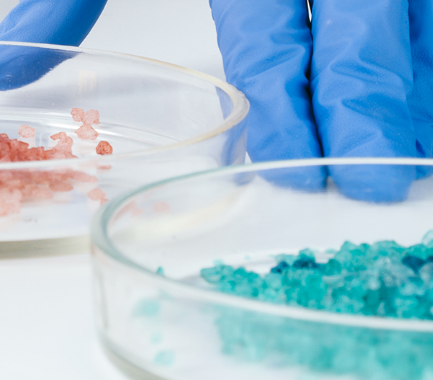Your contact
PENPET-Team - Hamburg

Christoph Meister
Sales
Tel. +49 (0) 40 - 675 7 99 30
sales@penpet.de
Get in touch with us.
Glycerine
Glycerine is a substance from the group of trivalent alcohols that is used in a variety of ways in industry, food production and medicine. In the bound form of a fatty acid ester, Glycerine is contained in natural fats and oils. From these, the substance can be produced using various technical processes of hydrolysis, saponification or transesterification. Large amounts of Glycerine are now obtained as a by-product when vegetable oils are transesterified with methanol to produce biodiesel. In addition to obtaining it from biological raw materials, it is also possible to produce the compound based on petrochemical raw materials such as propene.
Glycerine is used in a wide variety of applications. It can lower the freezing point of water and is used as an antifreeze in the automotive sector, among other things. In addition, Glycerine is used technically as a component of fog fluids, as a plasticizer and as a lubricant. Due to its hygroscopic properties, it is used in the food and beverages industry as a humectant for products such as tobacco products or chewing gum. In addition, the compound is used as a sweetener. As a moisturizing additive, Glycerine is also found in watercolors, shoe polish and cosmetics. Medicine uses the substance as a laxative, as a drug and in diagnostic procedures as well as for the treatment of skin injuries and burns. In the chemical industry, Glycerine is an intermediate for the production of Nitroglycerine.
At PENPET you can order the required amount of Glycerine in an uncomplicated and sustainable way. We look forward to receiving your inquiry for an individual offer. Delivered as liquid in ISO tank containers, in IBCs with various filling weights, and in drums of 250 kg each.
CAS no. 56-81-5
EINECS no. 200-289-5
Molecular formula: C3H8O3
Synonyms: Glycerol, Glycerine, Glycerineum, 1,2,3-Propanetriol, Propane-1,2,3-triol, Propanetriol, 1,2,3-Trihydroxypropane, 1,2,3-Trioxypropane, Oilsweet, E422
Areas of application: Used as antifreeze, humectant, fog fluid, lubricant, solvent, plasticizer and drug, raw material for the production of Nitro-Glycerine
More Information
Glycerine is the simplest trihydric alcohol. The compound consists of a propane structure with three carbon atoms each bonded to a hydroxy group. Glycerine thus has a high electrical polarity and highly hygroscopic properties.
The name Glycerine is misleading insofar as the substance does not belong to the amines or alkynes, but is an alcoholic compound. However, the term glycerol, which is more appropriate from this point of view, has not caught on to the same extent.
Under normal conditions, Glycerine is a colorless to yellowish-brownish, slightly viscous liquid with no inherent odor. The compound tastes pleasantly sweet. Glycerine is completely miscible with ethanol and water. However, it is not soluble in many organic solvents such as benzene, petrol, chloroform and petroleum ether.
Due to its highly hygroscopic property, Glycerine in aqueous solution can weaken the binding efforts between the water molecules and thus significantly lower the freezing point of the water in the mixture. When heated, Glycerine gradually turns into white fumes. The thermal decomposition of the substance leads to the release of harmful compounds such as acrolein and carbon monoxide.
Glycerine can be stored stably in its pure form as well as in mixtures with water, propylene glycol and ethanol. At low temperatures, however, the compound can change into crystalline structures, which only become liquid again when heated again to 20 °C.
Glycerine is combustible, but difficult to ignite. However, at elevated temperatures, the vapors of the compound form flammable and explosive mixtures with the surrounding air. Due to their higher density, these vapors are heavier than air. They can therefore spread unnoticed and collect on the ground.
Because of its three hydroxy groups, Glycerine reacts violently with strong oxidizing agents. For example, it decomposes spontaneously with crystalline potassium permanganate to form water and carbon dioxide. There is also a risk of explosion on contact with chromium trioxide, potassium chlorate and inorganic acids such as sulfuric acid, nitric acid and perchloric acid.
Glycerine is considered non-toxic and not a hazardous substance according to GHS classification. However, ingestion of large amounts of the compound can cause gastrointestinal upset, as well as thirst, headache, and drowsiness. In direct contact with skin and eyes, the compound can cause painful irritation and burning sensations. In this case, thorough rinsing with water is required.
Glycerine is classified as a slightly water-polluting compound. The substance must be prevented from entering the soil, surface water and sewage system.
